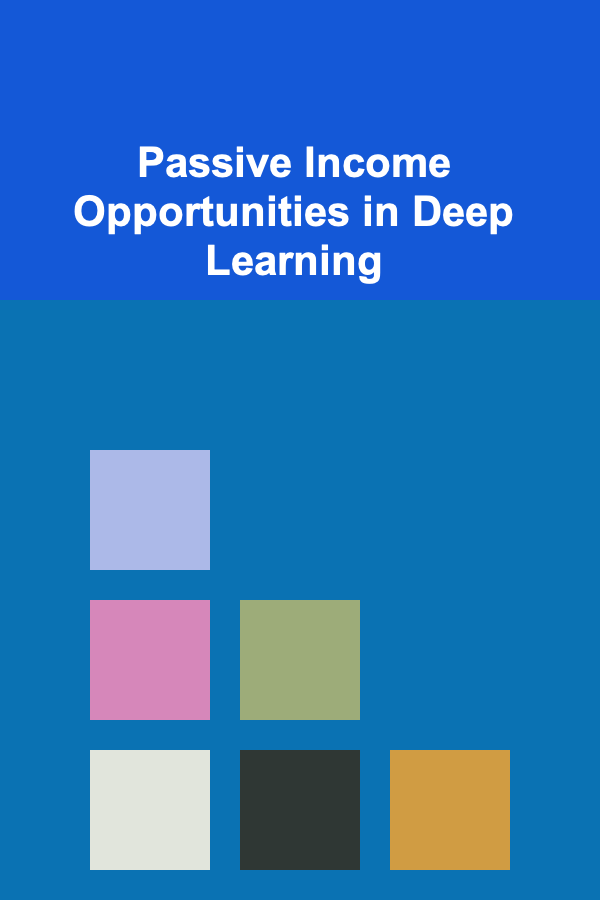
10 Tips for Using Data Analytics in HR Planning
ebook include PDF & Audio bundle (Micro Guide)
$12.99$8.99
Limited Time Offer! Order within the next:
Not available at this time

Human Resources (HR) has always been a critical function within organizations, but as companies evolve in the digital age, HR planning is becoming more sophisticated. Data analytics has emerged as a powerful tool in HR planning, offering insights that can transform how HR departments manage talent, performance, recruitment, and employee engagement. By leveraging data analytics, HR professionals can make more informed decisions that align with organizational goals, enhance employee satisfaction, and ultimately improve business outcomes.
In this article, we will explore 10 tips for effectively using data analytics in HR planning.
1. Utilize Predictive Analytics for Workforce Forecasting
Predictive analytics involves analyzing historical data to predict future trends and behaviors. For HR departments, predictive analytics can be a game-changer in workforce planning. By examining patterns related to employee turnover, performance, and recruitment trends, HR can anticipate future workforce needs.
How to implement predictive analytics:
- Employee turnover: Analyze past turnover data to predict which employees are at risk of leaving, allowing HR to take proactive measures to retain them.
- Hiring trends: Use predictive models to forecast hiring needs based on historical data about your organization's growth, industry trends, and seasonal fluctuations.
By forecasting future workforce demands, HR can create a more efficient hiring strategy, reduce gaps in staffing, and ensure the right talent is available when needed.
2. Enhance Recruitment with Data-Driven Insights
Recruitment is one of the most data-intensive areas of HR. Leveraging data analytics during the recruitment process can streamline operations and lead to better hiring decisions. By analyzing data from past recruitment efforts, HR professionals can identify the best sources for talent, the most effective recruitment strategies, and the characteristics of high-performing employees.
How to enhance recruitment with data:
- Source effectiveness: Track the effectiveness of different recruitment channels (e.g., job boards, social media, employee referrals) to identify where the best candidates are coming from.
- Time-to-hire metrics: Analyze the average time it takes to fill a position and identify bottlenecks in the hiring process.
- Candidate assessments: Use data to assess which recruitment tools (e.g., assessments, interviews) have been the most predictive of candidate success within the organization.
With data-driven insights, HR departments can refine their recruitment strategies, reduce time-to-hire, and ensure that they are attracting and hiring the best candidates.
3. Leverage Employee Engagement Data for Retention Strategies
Employee engagement is closely tied to retention. When employees feel engaged and satisfied, they are more likely to stay with the company. Data analytics provides HR with valuable insights into employee satisfaction levels, helping organizations develop targeted retention strategies.
How to leverage engagement data:
- Surveys and feedback tools: Use employee surveys, feedback forms, and sentiment analysis tools to gather data on employee satisfaction and engagement levels.
- Identify engagement drivers: Analyze patterns in engagement data to identify key drivers of employee satisfaction, such as work-life balance, recognition, or career development opportunities.
- Personalize retention efforts: Based on engagement data, tailor retention strategies for different employee groups. For example, some employees may value flexible working hours, while others may prioritize career growth opportunities.
By continuously monitoring engagement data, HR can take proactive measures to keep employees happy, reducing turnover and improving retention.
4. Use Workforce Analytics to Improve Talent Development
Talent development is a critical aspect of HR planning. By utilizing workforce analytics, HR can gain insights into employee skills, competencies, and career trajectories, helping to design more effective learning and development programs.
How to implement talent development with analytics:
- Skills gap analysis: Use analytics to identify skills gaps within the organization and align training programs with organizational needs.
- Performance data analysis: Review employee performance data to identify high-potential employees who may benefit from additional training or leadership development opportunities.
- Learning preferences: Analyze employee data to understand learning preferences (e.g., online courses, in-person training) and offer personalized development opportunities.
By using workforce analytics, HR can ensure that talent development programs are aligned with both employee and organizational needs, enhancing employee growth and performance.
5. Optimize Compensation and Benefits with Data
Compensation and benefits are vital components of HR planning, and data analytics can help HR professionals design more competitive and effective compensation packages. By analyzing compensation data across different employee demographics, industries, and job roles, HR can ensure their offerings are both attractive and equitable.
How to optimize compensation with analytics:
- Market benchmarking: Use data to compare your organization's compensation packages with those of competitors in the industry to ensure your offerings are competitive.
- Pay equity analysis: Analyze pay data to identify and address any pay disparities among employees based on factors such as gender, ethnicity, and job role.
- Benefit utilization: Track employee utilization of various benefits (e.g., health insurance, retirement plans, wellness programs) to determine which benefits are most valuable to employees and adjust offerings accordingly.
By using compensation and benefits data, HR can attract top talent, improve employee satisfaction, and maintain a fair and equitable workplace.
6. Monitor and Analyze Diversity and Inclusion Metrics
Diversity and inclusion (D&I) have become essential aspects of organizational success, and data analytics plays a crucial role in monitoring and improving D&I initiatives. By collecting and analyzing data on employee demographics, HR can assess the effectiveness of D&I programs and identify areas for improvement.
How to track D&I with data:
- Demographic analysis: Collect and analyze data on the gender, race, age, and other demographics of your workforce to ensure diversity across all levels of the organization.
- Diversity hiring metrics: Track the diversity of job applicants and new hires to ensure that recruitment efforts are inclusive.
- Employee feedback: Use engagement surveys to gather feedback from employees on how inclusive they perceive the workplace culture to be.
Data analytics helps HR measure the impact of diversity and inclusion initiatives and make informed decisions to foster a more inclusive workplace culture.
7. Implement Predictive Analytics for Employee Turnover Prevention
Employee turnover is costly for organizations, both in terms of direct costs (e.g., recruitment, training) and indirect costs (e.g., lost productivity, low morale). Predictive analytics can help HR identify employees who are at risk of leaving the organization, enabling proactive interventions to prevent turnover.
How to prevent turnover with predictive analytics:
- Identify turnover predictors: Use data to identify factors that correlate with turnover, such as job satisfaction, compensation, performance issues, or career development opportunities.
- Employee engagement and sentiment analysis: Monitor engagement levels and employee sentiment to spot early warning signs of dissatisfaction.
- Develop retention strategies: Once at-risk employees are identified, HR can implement retention strategies tailored to their needs, such as offering career development opportunities, adjusting workloads, or improving work-life balance.
By leveraging predictive analytics, HR can take timely action to reduce turnover and retain valuable talent.
8. Track Employee Performance with Data Analytics
Employee performance is central to HR planning, and data analytics provides valuable insights into individual and team performance. By tracking key performance indicators (KPIs) and using data to assess employee productivity and effectiveness, HR can make more informed decisions about promotions, compensation, and development opportunities.
How to track performance with data:
- Set clear performance metrics: Use data to establish clear and measurable performance metrics for employees.
- Monitor performance trends: Analyze performance data over time to identify trends, such as improvement or decline in productivity.
- 360-degree feedback: Incorporate feedback from multiple sources (e.g., managers, peers, subordinates) to get a comprehensive view of employee performance.
Data-driven performance management allows HR to make fair, transparent, and objective decisions that benefit both employees and the organization.
9. Improve Employee Onboarding with Data Insights
Onboarding is a critical part of the employee experience, and data analytics can help improve this process. By analyzing data on employee retention, job satisfaction, and performance during the onboarding period, HR can identify areas where the onboarding process can be improved.
How to optimize onboarding with data:
- Onboarding surveys: Collect feedback from new hires about their onboarding experience to identify areas for improvement.
- Track early performance: Use data to track the performance of new hires during their first few months to assess the effectiveness of the onboarding process.
- Tailor onboarding: Use data insights to customize the onboarding experience based on the specific needs and roles of new employees.
By continuously improving the onboarding process based on data, HR can ensure new hires feel welcomed, supported, and set up for success.
10. Use Data to Foster a Culture of Continuous Improvement
HR departments can use data to promote a culture of continuous improvement throughout the organization. By regularly analyzing employee data and feedback, HR can identify opportunities to enhance processes, improve communication, and increase employee satisfaction.
How to use data for continuous improvement:
- Employee feedback loops: Create systems for regularly collecting and acting on employee feedback.
- Monitor performance metrics: Use data to track the effectiveness of HR initiatives and identify areas where improvements can be made.
- Foster innovation: Encourage HR professionals to use data-driven insights to suggest new initiatives or strategies to improve employee engagement, development, and retention.
Data helps create a dynamic HR environment where continuous improvement is driven by facts and insights rather than assumptions or anecdotal evidence.
Conclusion
Data analytics is transforming HR planning, enabling HR professionals to make more informed decisions and design strategies that drive organizational success. By leveraging data across various HR functions---recruitment, employee engagement, talent development, compensation, diversity, and more---HR can align its efforts with business goals, improve employee satisfaction, and contribute to overall organizational growth.
Embracing data analytics in HR is not just about collecting data, but using that data to make meaningful, data-driven decisions that have a lasting impact on both employees and the organization. As data tools become more advanced, the potential for HR to harness insights from data will continue to grow, making HR departments more strategic and valuable to organizations.

How to Create a Holiday-Themed Gallery Wall
Read More
How to Make Money Typing for Academic and Research Purposes
Read More
How to Save for a Down Payment on a House with a Strict Budget
Read More
Passive Income Opportunities in Deep Learning
Read More
Attracting Finches and Other Seed-Eating Birds to Your Yard
Read More
10 Tips for Treating Athlete's Foot Naturally
Read MoreOther Products

How to Create a Holiday-Themed Gallery Wall
Read More
How to Make Money Typing for Academic and Research Purposes
Read More
How to Save for a Down Payment on a House with a Strict Budget
Read More
Passive Income Opportunities in Deep Learning
Read More
Attracting Finches and Other Seed-Eating Birds to Your Yard
Read More